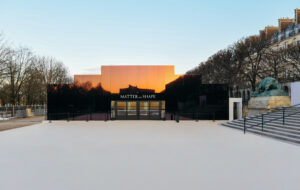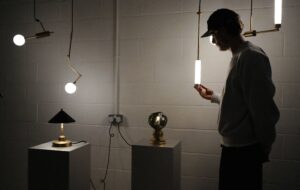
words William Wiles
“There ought to be a monument to the man who invented the neon light,” said Raymond Chandler. The mystique and poetry of neon was tapped into by many writers and film directors, and Chandler, as the patron saint of American noir, was leading among them.
He saw that the signature of the hard-boiled mid-century metropolis was scrawled in neon. Neon was glamorous and sleazy like Times Square. It meant the high life (“cocktail lounge”), low life (“girls, girls, girls”) and the banal (“diner”).
But neon is disappearing. As LCD and LED signs become more popular, it is losing its prominence. It’s also increasingly seen as having something of a “retro” look, far more primitive than modern computer graphics-driven displays. It won’t disappear, but its heyday is over. And there’s good reason to mark its passing. When neon signs first appeared, they were called “liquid fire”. It’s a telling description – neon tubes have a fluidity about them that belies the brittle glass material. LCD and LED displays have not, so far, created a language and imagery of their own; they are simply wall-mounted photographs, or film clips, and what they gain in image fidelity they lose in poetry.
Some gases glow when an electric current is passed through them. This was first observed in the 17th century, but until electricity was better understood in the 19th century, it was little more than a curiosity. The man Raymond Chandler wanted to immortalise was called George Claude, who in 1902 passed electricity through a tube of neon gas, causing it to glow bright red. In 1923, the Packard company of the United States applied Claude’s neon tubes to advertising. Neon light’s brightness and colour made it loud and brash but key to its appeal to advertisers was its flexibility. As the tubes could be easily curved, bent and twisted, it was straightforward to use them to spell out text and form images. Switching on and off different parts of a sign could further add to the effect by giving the illusion of movement, so that a neon cowboy can appear to lift a cigarette to his lips, or glasses can seem to come together in a toast. Venturi, Scott Brown and Izenour’s Learning from Las Vegas underscored the importance of neon in vernacular architecture: a shed was just a shed, but a shed with a neon sign was a monument, a landmark.
Neon is the perfect eye-catching medium for advertisers, but it has also become an artistic shorthand. Countless movie scenes use neon to represent the naive country boy’s arrival in the big city, or exploit the poignancy of the “(No) Vacancy” sign reflected in a puddle.
As a medium of communication, neon has also appealed to artists, from Bruce Nauman in the 1970s to more recent work by Tracey Emin and Martin Creed. Neon is dramatic, declamatory, vivid. It combines the humanity of the pen-stroke with the impersonal fizz of the machine city. It can be both monumental and transient – more so than ever now, as neon signs become museum pieces and the objects of conservation battles, and a once red-hot technology turns retro, pointing to our past as it once did to the future.
















